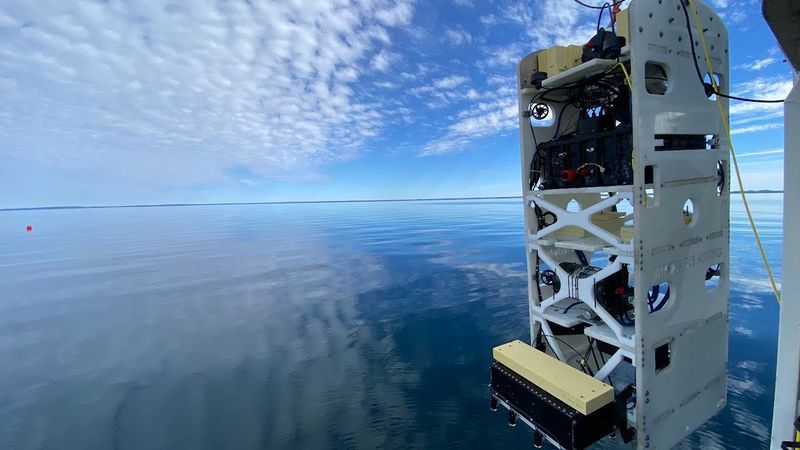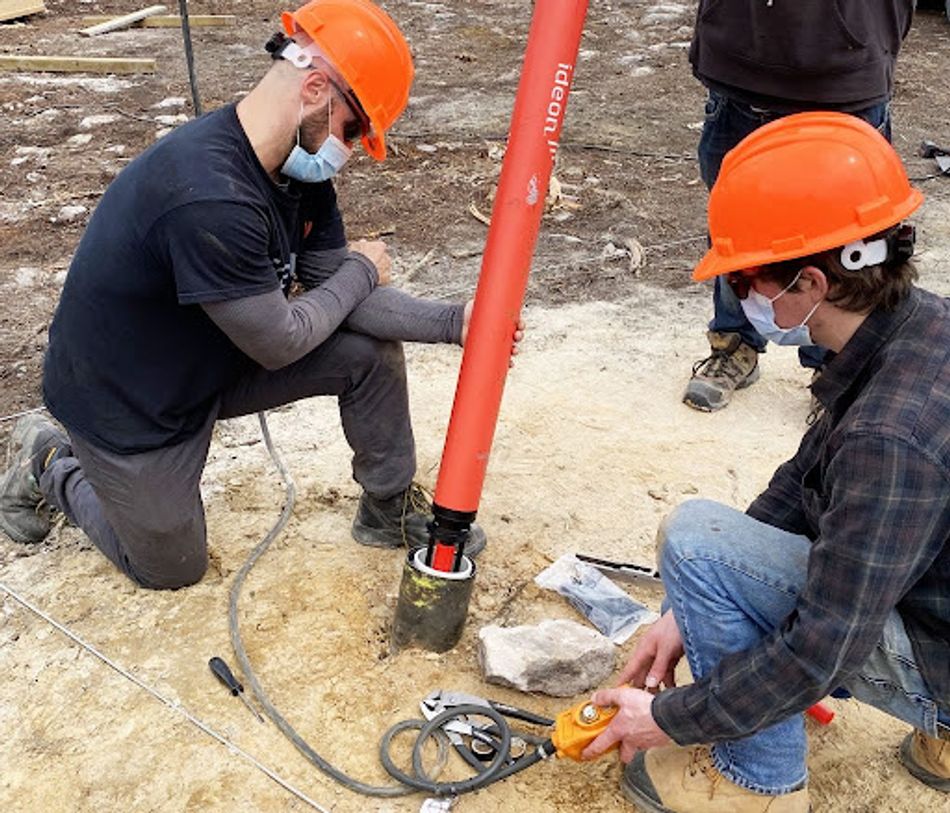Unearthing the Future of Mining Technology
Critical minerals are crucial for technology and a green economy but are hard to access due to depleted deposits and mining's eco-social issues. MistyWest recently hosted a meetup to discuss innovation barriers and societal perceptions.

The Eureka 1 autonomous underwater vehicle. The prototype is a full-scale, artificially intelligent deep sea mineral harvesting system. Image credit: Impossible Metals.
Intro
Critical minerals are the bedrock of modern technology and represent a key bottleneck to enabling a lower-carbon economy. From semiconductors and electric vehicles to wind turbines and grid-scale batteries, critical minerals play a pivotal role.
Accessing these vital minerals is a challenging task, as humans have already explored and extracted surface deposits for centuries. On top of this, the mining industry has garnered an unfavorable reputation among the public due to its history of destabilizing ecosystems and putting human lives at risk.
The road ahead requires novel solutions to very complex challenges, and this situation has led MistyWest to add mining as a core industry focus as we continue to work with companies that empower resource companies to adopt more ethical and environmentally friendly practices.
For our final Vancouver Hardware Meetup of the year, MistyWest gathered five local leaders working in mining tech to provide our community with a panoramic view of the industry’s trajectory for a conversation that touched on the economic and political barriers to innovation, the most exciting cutting edge technologies, and the societal shifts concerning mining. The following are the top 3 takeaways from the discussion.
A sustainable future means massively increasing available minerals
The logic here is fairly simple; to achieve a sustainable future, we need to shift from fossil fuels to low-carbon sources of electrical energy in as many areas as possible.
The ability to generate, transmit, store, and utilize that electricity is dependent on a number of minerals, especially lithium, cobalt, copper, zinc, and nickel. Production of minerals required for the International Energy Agency’s Sustainable Development Scenario is expected to be four times the current production; up to 28 million tonnes by 2040, with the majority of the increased demand coming from electrical transmission, storage, and electric vehicles.
In addition to keeping up with the spike in demand for clean energy, we also need to find ways to reduce the energy consumption of the mining industry. For example, comminution (breaking rocks into smaller rocks) takes up 3-4% of all electrical energy generated globally and 60-70% of the power consumption on a mine site. Discussion moderator Kari LaMotte’s venture Promet is working to make improvements in the efficiency of rotary mills, and MistyWest has helped explore novel methods of breaking up rocks with Rockburst Technologies.
Where and how we extract minerals in the future will change massively
When it comes to how we extract minerals, technological advancements are happening every day. “The use of lasers, computer vision, autonomous haul trucks, and autonomous drones are playing a key role in expanding possibilities,” says Taylor Cooper, CEO of MistyWest.
The definition of mining is beginning to expand to include a much wider range of activities in a wider range of locations. In the coming years, our panelists expect mining without a mine to become more common “With new subsurface imaging tools, it’s now possible to precisely bore a hole, dissolve minerals in-situ, and pump the solution to the surface for recovery.” mentions Doug Schouten, CTO & co-Founder of Ideon Technologies, who are enabling mineral exploration through the novel application of muon tomography.
One promising area involves the systematic mining of landfills. The technology for efficiently extracting critical minerals from discarded goods is well-established and efficient. However, the significant obstacle to making landfill mining profitable lies in determining which landfills and which sections will be most profitable to mine. At its core, landfill mining is an exploration problem.
At the other end of the spectrum, deep sea mining of manganese nodules faces significant challenges in the efficient extraction of known mineral deposits. The Clarion-Clipperton Zone in the Pacific Ocean, for instance, holds approximately 21 billion tonnes of manganese nodules. While awareness of this mineral deposit dates back to the 1980s, the technical difficulties associated with operating at depths of almost 6 kilometers below the ocean surface are substantial. Moreover, these manganese nodules play a crucial role as a hard substrate for deep ocean life, making full ocean floor dredging potentially catastrophic. Advanced underwater robotics, such as those envisioned by Impossible Metals, may be the path forward.
There needs to be a shift in the culture of innovation
There was a clear consensus among panelists: mining must embrace change and increase innovation to improve processing methods and waste reduction. “The public still sees mining as something dirty,” says Tracy Lydiatt, Mining Innovation Project Manager at Foresight Canada. However, the mining industry faces significant challenges, as errors in this field carry substantial costs both in terms of human life and revenue, resulting in a slow pace of progress.
“There is a terrible line in the mining industry, that ‘we want to be first to be second’” says John Thompson, Director of MineSense Technologies. This mindset is driven by the substantial upfront costs, inherent risks, and potential prolonged failures. The financial impact of even a single day's shutdown can be in the millions of dollars, underscoring the industry's need for seamless 24/7 operations, and influencing the cautious adoption of new technologies.
Conclusion
The insights shared at the Vancouver Hardware Meetup painted a picture of an industry in transformation - and at a crossroads. “In mining, you have substantial world-changing problems to solve. If you have an engineer and entrepreneurial mindset, there are few industries who make a more significant impact” says Eli Alston, General Manager of Safety Solutions for Wenco, who are improving operational efficiency in mining.
Mining, traditionally viewed as rigid and slow-moving, is stepping into a new era marked by technological advancements, environmental consciousness, and a commitment to ethical practices. The intersection of mining and technology is capable of rewriting the rules, redefining efficiency and reinforcing safety for its workers.
The industry stands poised to drive significant global changes, with the potential to create a greener future.

